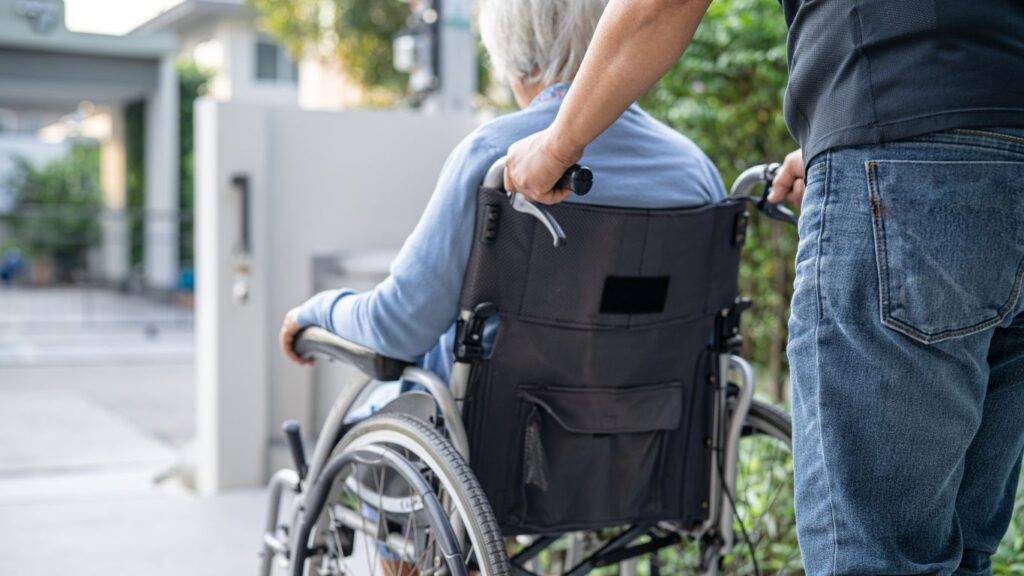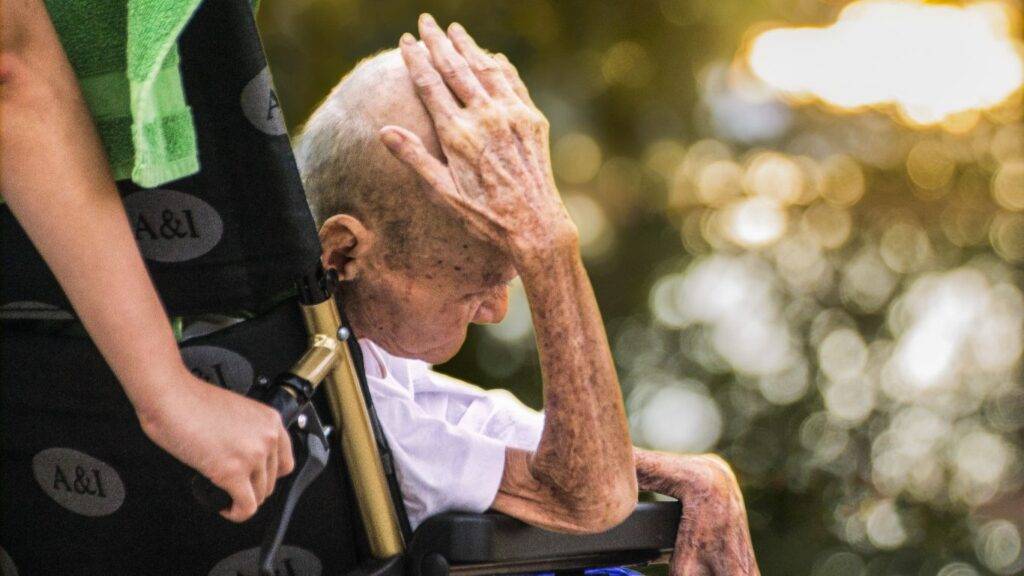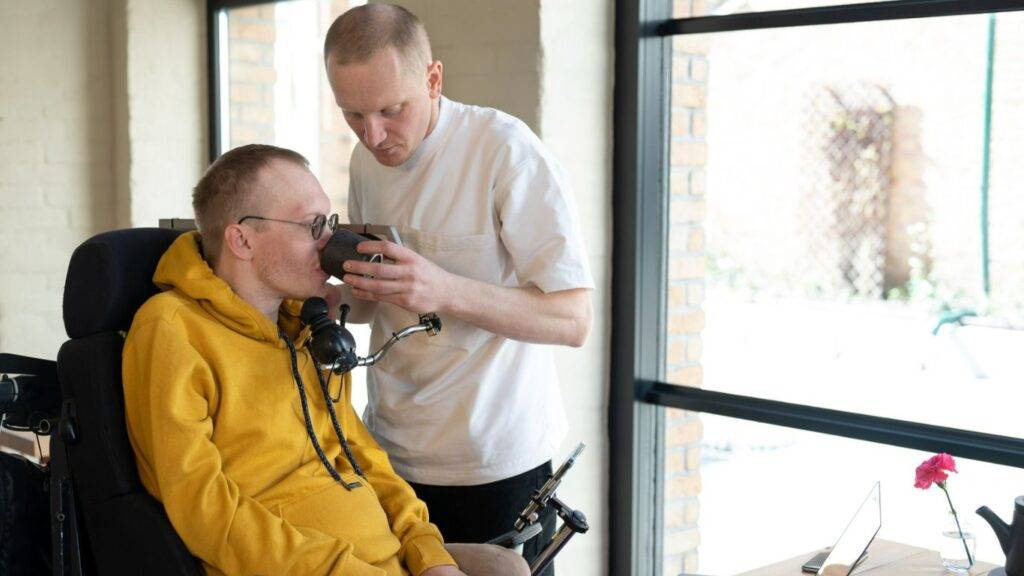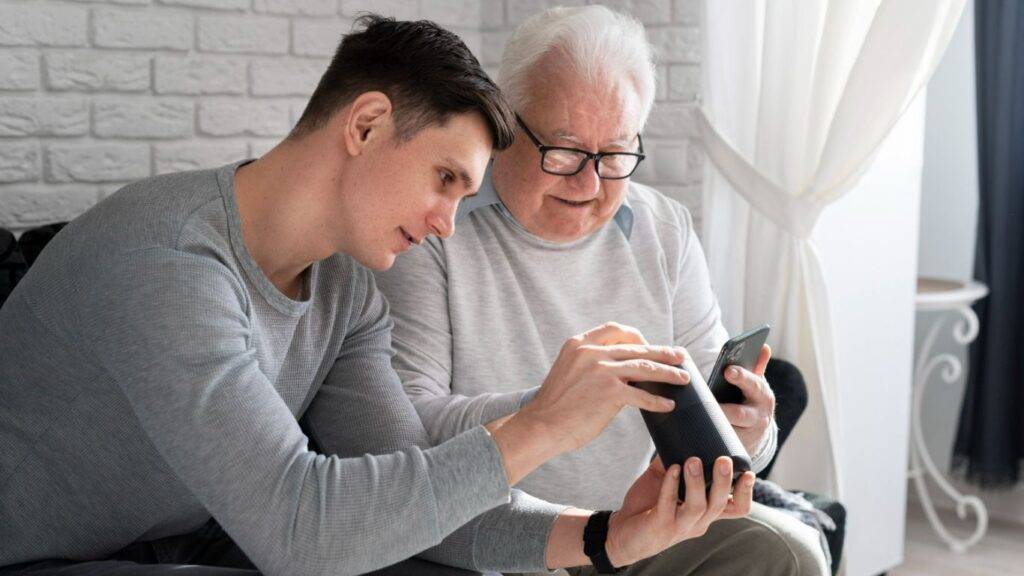CDPAP Program Insights
Medicaid Matters: Key Insights for Your CDPAP Homecare Journey

Embarking on a journey into the world of homecare, especially through the Consumer Directed Personal Assistance Program (CDPAP), requires a solid understanding of the financial backbone that often supports such initiatives—Medicaid. In this blog, we delve into the essential insights that every individual considering CDPAP homecare should know about Medicaid.
The Medicaid Basics
Medicaid, a joint federal and state program, serves as a lifeline for individuals and families with limited financial means. It is designed to bridge the gap in healthcare accessibility, ensuring that essential medical services, including homecare, are available to those who need them the most.
Determining Medicaid Eligibility
Understanding whether you qualify for Medicaid is the first crucial step. Eligibility is determined by various factors, including income, household size, and specific circumstances. Before venturing into CDPAP homecare, it’s essential to assess your eligibility status to leverage the financial support Medicaid provides.
The Intersection of Medicaid and CDPAP
Consumer Directed Personal Assistance Program (CDPAP) operates under the Medicaid umbrella, offering a distinctive approach to homecare. Unlike traditional models, CDPAP empowers individuals to actively participate in their care by choosing their caregivers, often family members or friends. Medicaid, in turn, funds this personalized and individualized homecare option.
Navigating Medicaid Policies
Understanding the nuances of Medicaid policies is critical. From coverage details to the documentation required, being well-informed ensures a smoother CDPAP homecare journey. Stay abreast of any changes in policies that may impact your eligibility or the services available to you.
Personalization and Independence
One of the hallmarks of CDPAP is its emphasis on personalization and independence. Medicaid’s role in funding CDPAP allows individuals to exercise control over their care plans. This level of autonomy not only enhances the quality of care but also promotes a sense of dignity and empowerment for those receiving care.
The Financial Impact
Understanding the financial implications of Medicaid on your CDPAP homecare journey is vital. Explore how Medicaid can alleviate the financial burden associated with homecare services, allowing you to focus on the well-being and comfort of your loved ones.
Advocating for Your Needs
Medicaid recipients have the right to advocate for their needs and preferences. Being informed about your rights within the Medicaid framework empowers you to actively participate in the decision-making process, ensuring that the care provided aligns with your unique requirements.
In the realm of CDPAP homecare, Medicaid serves as a cornerstone, providing the financial support needed to create a personalized and dignified care experience. Armed with these key insights, you are better equipped to navigate the intersection of Medicaid and CDPAP, fostering a homecare journey that prioritizes the well-being and autonomy of both caregivers and those receiving care.
Requirements for Enrolling in CDPAP

To enroll in CDPAP, it is crucial to understand and fulfill specific requirements. Here’s a comprehensive overview of the key prerequisites for enrolling in CDPAP:
Medicaid Eligibility
Enrollees must meet the eligibility criteria for Medicaid, the joint federal and state program that provides healthcare coverage for individuals with limited income and resources. Each state may have its own income and asset requirements, so it’s essential to verify eligibility with the local Medicaid office.
Medical Assessment
A comprehensive medical assessment by a licensed healthcare professional, such as a physician or nurse practitioner, is required to determine the level of care needed. This assessment helps establish the necessity for home care services and the number of hours of care required.
Need for Home Care Services
Individuals seeking enrollment in CDPAP must demonstrate a genuine need for assistance with activities of daily living (ADLs) or instrumental activities of daily living (IADLs). This includes tasks such as bathing, dressing, meal preparation, and mobility.
Self-Directing Capability
CDPAP is designed for individuals who can actively direct their care or have a designated representative, such as a legal guardian, who can make decisions on their behalf. The enrollee or their representative assumes responsibility for choosing and managing their caregivers.
Care Plan Development
A comprehensive care plan, outlining the specific tasks and services required, must be developed. This plan serves as a blueprint for the caregiving services and is used to determine the number of hours covered by CDPAP.
Selection of Caregivers
One of the distinctive features of CDPAP is the enrollee’s ability to choose their caregivers. Eligible caregivers may include family members, friends, or other qualified individuals. Caregivers must be legally authorized to work in the United States.
Provider Enrollment
Caregivers selected by the enrollee need to go through the enrollment process as personal assistants in the CDPAP program. This involves completing necessary paperwork, including background checks and other relevant documentation.
Continuous Reassessment
Enrollees’ care needs are subject to periodic reassessment to ensure that the level of care provided aligns with their evolving requirements. This process helps maintain the effectiveness and appropriateness of the care plan.
State-Specific Requirements
It’s important to note that eligibility criteria and processes can vary by state. Prospective enrollees should consult with their local Medicaid office or CDPAP coordinator to gain a clear understanding of the specific requirements in their state.
Navigating the requirements for enrolling in CDPAP demands a careful consideration of both individual and state-specific factors. By meeting these criteria, individuals can access the benefits of CDPAP, enjoying a personalized approach to home care that aligns with their unique needs and preferences.
CDPAP Scams and Misrepresentation

Uncovering CDPAP Scams and Misrepresentation
With the benefits of such programs come the risks of scams and misrepresentation. It is crucial to be aware of potential deceitful practices that could compromise the integrity of CDPAP. Here’s an exploration of CDPAP scams and misrepresentation:
Fraudulent Caregiver Recruitment
Scammers may pose as legitimate caregivers seeking employment through CDPAP. They may present false credentials or misrepresent their qualifications, putting vulnerable individuals at risk of receiving subpar or even harmful care.
False Enrollment Services
Some fraudulent entities may offer unauthorized services to enroll individuals in CDPAP, claiming to expedite the process or guarantee approval. This can lead to financial exploitation and potential harm to those seeking genuine assistance.
Financial Exploitation
Scammers may exploit individuals by promising financial incentives or misrepresenting the financial aspects of CDPAP. This could involve charging excessive fees for caregiver services or misusing funds intended for the program.
Identity Theft Concerns
Misrepresentation can extend to identity theft, where scammers may request sensitive personal information under the guise of facilitating CDPAP enrollment. Protecting personal data is crucial to preventing identity theft-related scams.
Unauthorized CDPAP Programs
Individuals may be deceived into participating in unauthorized or sham CDPAP programs. These programs might lack the necessary oversight and adherence to regulations, potentially compromising the quality and safety of care provided.
Educational Deception
Scammers may misrepresent the educational requirements and qualifications needed for caregivers participating in CDPAP. This can lead to individuals unknowingly selecting caregivers who lack the necessary skills or training.
False Promises of Benefits
Individuals may fall victim to scams promising exaggerated benefits or advantages within the CDPAP program. False guarantees of increased financial assistance or additional services could lead to disappointment and financial loss.
Vigilance in Caregiver Selection
Misrepresentation can occur during the caregiver selection process. Individuals should exercise caution when choosing caregivers, ensuring they verify credentials, qualifications, and background information to prevent potential scams.
Reporting Suspected Scams
Individuals must report any suspected scams or misrepresentations related to CDPAP. This helps authorities and program administrators take swift action to protect the integrity of the program and its participants.
Public Awareness and Education
Raising awareness about CDPAP scams and misrepresentation is essential. Educational initiatives can empower individuals to recognize red flags, ask the right questions, and make informed decisions when participating in the program.
Remaining vigilant and informed is paramount in safeguarding the integrity of CDPAP. By being aware of potential scams and misrepresentations, individuals can make more informed choices and contribute to the overall protection of vulnerable participants in this valuable program.
Ending the Employment of a Caregiver

Employing a caregiver is a significant decision, and there may come a time when it becomes necessary to conclude that professional relationship. Whether due to changing care needs, personal circumstances, or other reasons, ending the employment of a caregiver requires careful consideration and a compassionate approach. In this guide, we will explore the steps and considerations involved in navigating this delicate process.
Open Communication
Before making any decisions, initiate an open and honest conversation with the caregiver. Communicate the reasons for the change, whether they are related to the senior’s evolving needs, scheduling conflicts, or any other pertinent factors. Encourage the caregiver to share their perspective and address any concerns they may have.
Legal and Contractual Considerations
Review the employment contract and any relevant legal considerations. Be aware of notice periods, termination clauses, and any obligations outlined in the agreement. Understanding these aspects will help ensure a smooth and legally compliant transition.
Planning and Transition Period
Whenever possible, plan for a transition period. This allows the caregiver and the care recipient to adjust gradually. During this time, provide detailed information about the senior’s care routine, preferences, and any other essential details. This can help the new caregiver, if one is being hired, to step into the role seamlessly.
Supportive Resources
Offer resources and support to the caregiver during the transition. This could include providing references, assisting with job searches, or offering guidance on finding new employment opportunities. Show appreciation for the caregiver’s contributions and acknowledge the positive aspects of their work.
Emotional Considerations
Recognize that ending a caregiver’s employment can be an emotional experience for both parties. Be empathetic and understanding, and encourage open dialogue. If possible, arrange a farewell meeting with the senior and the caregiver to facilitate closure and express gratitude for their service.
Transitioning to a New Caregiver
If hiring a new caregiver, take the time to carefully select someone who meets the specific needs and preferences of the senior. Involve the senior in the decision-making process to ensure a comfortable and compatible fit.
Post-Transition Follow-Up
After the transition is complete, follow up with the senior and the former caregiver to ensure a smooth adjustment. Address any concerns or issues promptly and maintain open communication to foster positive relationships moving forward.
Ending the employment of a caregiver is a nuanced process that requires empathy, clear communication, and careful planning. By approaching the situation with sensitivity and respect, you can ensure a smooth transition that prioritizes the well-being of both the caregiver and the senior receiving care. Remember that fostering positive relationships throughout the process contributes to a harmonious transition and sets the stage for continued care and support.
Considerations When Hiring a Caregiver

When it comes to entrusting the care of a loved one to a professional caregiver, making the right choice is paramount. The process of hiring a caregiver involves thoughtful consideration of various factors to ensure a compassionate and competent match. In this blog post, we explore key considerations that should guide you through the caregiver selection process, promoting the well-being and comfort of your loved one.
Qualifications and Experience
A caregiver’s qualifications and experience form the foundation of their competency. Assess their training, certifications, and relevant experience in caring for individuals with similar needs. A seasoned caregiver brings a wealth of knowledge and skills to navigate various caregiving situations.
References and Recommendations
Seek out references or recommendations from previous clients or employers. Hearing about the experiences of others who have worked with the caregiver can provide valuable insights into their reliability, professionalism, and the quality of care they deliver.
Background Check and Screening
Prioritize the safety and security of your loved one by conducting a thorough background check. Verify criminal records, professional credentials, and employment history to ensure the caregiver is trustworthy and has a clean record.
Compatibility and Personality Match
Assessing the compatibility between the caregiver and your loved one is crucial for fostering a positive and comfortable environment. Consider the caregiver’s personality, communication style, and interpersonal skills to ensure a harmonious relationship.
Flexibility and Availability
Caregiving often requires flexibility in scheduling and the ability to adapt to changing circumstances. Discuss the caregiver’s availability and willingness to accommodate varying needs, including weekends, holidays, and unexpected events.
Specialized Skills and Training
Depending on your loved one’s specific health condition or requirements, inquire about any specialized skills or training the caregiver possesses. This could include familiarity with medical equipment, knowledge of specific caregiving techniques, or experience with certain health conditions.
Cultural Sensitivity
Cultural competence is essential in caregiving, especially in diverse communities. A caregiver who understands and respects your loved one’s cultural background can provide more personalized and sensitive care.
Communication and Reporting
Clear and open communication is vital for a successful caregiver-client relationship. Discuss communication expectations, reporting procedures, and how information about your loved one’s well-being will be conveyed to you.
Trial Period
Consider initiating a trial period to assess the caregiver’s compatibility with your loved one. This allows you to evaluate their performance in real-life situations before making a long-term commitment.
Gut Feeling
Trust your instincts. If something doesn’t feel right or if you have reservations, it’s important to address them. Your intuition can be a valuable guide in the decision-making process.
Hiring a caregiver is a significant decision that requires careful thought and consideration. By focusing on these key considerations, you can navigate the selection process with confidence, ultimately choosing a caregiver who not only meets the practical needs of your loved one but also fosters a compassionate and supportive environment for their well-being.
Navigating Immediate Need CDPAP: A User-Friendly Application Guide

Embarking on the journey of applying for Immediate Need CDPAP can seem like a daunting task, but fear not! In this user-friendly application guide, we’ll break down the process into manageable steps, ensuring that you navigate the intricacies with ease. Whether you’re a caregiver seeking assistance or an individual in need of care, understanding the application process is key to accessing the benefits of the Consumer Directed Personal Assistance Program.
Understanding Immediate Need CDPAP
To begin, let’s delve into what Immediate Need CDPAP entails. This program is designed to provide individuals with immediate, short-term personal care assistance, offering flexibility and control over the selection and management of caregivers. Whether it’s help with daily activities, medical needs, or companionship, Immediate Need CDPAP strives to empower individuals to maintain independence.
Eligibility Criteria
One of the initial steps in the application process is determining eligibility. We’ll guide you through the eligibility criteria, helping you understand if you or your loved one qualifies for Immediate Need CDPAP. From medical requirements to residency considerations, clarity on eligibility is crucial to moving forward with confidence.
Gathering Necessary Documentation
Once eligibility is established, the next step involves gathering the necessary documentation. This may include medical records, proof of residency, and other supporting documents. Our guide will provide a checklist to ensure you have all the required paperwork, streamlining the application process.
Choosing a Fiscal Intermediary
Immediate Need CDPAP requires the involvement of a Fiscal Intermediary (FI) to handle administrative tasks such as payroll and benefits. We’ll explore how to select a reliable FI, considering factors like reputation, support services, and ease of communication.
Completing the Application
With eligibility confirmed and documentation in order, it’s time to complete the application. We’ll walk you through the application form, explaining each section and offering tips to ensure accuracy. Our goal is to make this step as user-friendly as possible, removing any potential roadblocks.
Navigating the Approval Process
After submitting your application, understanding the approval process is essential. We’ll guide you through what to expect, including potential timelines and steps you can take to expedite the process. Being informed about the approval journey will empower you during this waiting period.
Navigating the Immediate Need CDPAP application process doesn’t have to be overwhelming. By following this user-friendly guide, you’ll be equipped with the knowledge and confidence to move forward. Remember, the goal of Immediate Need CDPAP is to enhance your quality of life, providing personalized care and support. Let’s embark on this journey together, ensuring that you navigate the process with ease and success.
Caregiver Services in Personalized Care

In the intricate tapestry of life, there comes a time when some of us require a little extra support and compassion. Personalized care is a beacon of hope, offering tailored assistance that goes beyond the conventional. At the heart of this compassionate movement are caregiver services, weaving an intricate web of support to elevate lives to new heights.
Understanding Personalized Care
Personalized care is the cornerstone of a holistic approach to well-being. It recognizes that each individual is unique, with distinct needs, preferences, and challenges. In this context, caregiver services emerge as invaluable allies, providing not just assistance but a personalized touch that resonates with the individual’s essence.
The Role of Caregiver Services
Caregiver services extend far beyond the realms of traditional assistance. They are the architects of personalized care plans, meticulously crafted to address the specific requirements of each individual. Whether it’s aiding with daily activities, providing companionship, or offering emotional support, caregivers become partners in the journey to enhanced well-being.
Tailoring Support to Individual Needs
One size fits none when it comes to personalized care. Caregiver services take a bespoke approach, conducting thorough assessments to understand the unique circumstances of the person in need. This personalized touch ensures that every aspect of care is aligned with the individual’s preferences, fostering a sense of comfort and security.
Promoting Independence and Dignity
Personalized caregiver services are designed to empower individuals, promoting independence and preserving dignity. Rather than imposing a standardized routine, caregivers work collaboratively with those under their care to develop strategies that enhance autonomy. This collaborative spirit is the essence of personalized care, allowing individuals to maintain control over their lives.
Creating Meaningful Connections
Beyond the practical aspects of care, caregiver services forge meaningful connections. The relationships between caregivers and those they assist transcend the transactional, evolving into bonds built on trust, respect, and genuine care. These connections are vital components of personalized care, fostering emotional well-being alongside physical support.
The Emotional Component of Caregiver Services
In the realm of personalized care, emotions play a crucial role. Caregivers bring empathy and understanding into their service, recognizing the emotional needs of those they care for. This empathetic approach creates a nurturing environment where individuals feel heard, valued, and understood, contributing significantly to their overall well-being.
In the symphony of personalized care, caregiver services play a pivotal role as compassionate conductors. By tailoring their support to individual needs, promoting independence, and fostering meaningful connections, caregivers elevate the concept of care to new heights. As we navigate the complexities of life, the transformative power of personalized caregiver services becomes a guiding light, harmonizing lives and enriching the human experience.
A Special Needs Caregiver's Role in CDPAP Homecare

Caring for a loved one with special needs is a profound and unique journey that demands not only dedication but also a compassionate understanding of the individual’s specific challenges. In the realm of homecare, the Consumer Directed Personal Assistance Program (CDPAP) has emerged as a transformative option, putting the power of care back into the hands of those who know their loved ones best. In this blog, we explore the indispensable role of a special needs caregiver within the framework of CDPAP homecare.
Understanding the Unique Challenges
Special needs caregivers navigate a landscape that often involves medical complexities, diverse therapeutic needs, and the essential task of fostering a supportive and inclusive environment. Their role extends far beyond traditional caregiving, involving advocacy, emotional support, and a deep commitment to enhancing the quality of life for their loved ones.
Empowerment through CDPAP Homecare
CDPAP homecare recognizes the expertise and dedication of special needs caregivers, empowering them to take charge of the care process. Unlike conventional homecare models, CDPAP allows caregivers to select, train, and direct their own personal assistants, often family members or friends. This level of personalization ensures that the care provided aligns seamlessly with the unique requirements of the individual with special needs.
A Personalized Approach to Care
One of the standout features of CDPAP homecare is its commitment to a person-centered approach. Special needs caregivers play a pivotal role in tailoring care plans, ensuring that each aspect addresses the specific needs, preferences, and routines of their loved ones. This level of customization fosters a sense of dignity and independence for individuals with special needs.
Advocacy and Collaboration
Special needs caregivers are not just providers of care; they are also advocates for their loved ones. Within the CDPAP framework, caregivers actively collaborate with healthcare professionals, therapists, and other service providers to create a comprehensive care ecosystem. This collaborative effort ensures that every aspect of the individual’s well-being is considered and addressed.
Balancing Responsibilities and Self-Care
The role of a special needs caregiver can be all-encompassing, and it’s crucial to acknowledge the importance of self-care. CDPAP homecare recognizes the caregiver’s need for respite and personal time, offering a balance between fulfilling their caregiving responsibilities and maintaining their own well-being.
Celebrating Unsung Heroes
Special needs caregivers within the CDPAP community are unsung heroes, tirelessly dedicating themselves to the well-being of their loved ones. This blog celebrates their resilience, compassion, and the invaluable contributions they make in shaping the lives of those with special needs.
In the intricate tapestry of special needs caregiving, CDPAP homecare stands as a beacon of empowerment, allowing caregivers to provide the highest standard of personalized care. The collaboration between CDPAP and special needs caregivers not only transforms the caregiving experience but also reaffirms the principle that every individual, regardless of their abilities, deserves a life of dignity, respect, and love.
Senior-Friendly Smartphones

In an era dominated by technology, smartphones have become indispensable tools for staying connected, informed, and entertained. For seniors, finding a smartphone that aligns with their unique needs is crucial. In this blog, we explore the world of senior-friendly smartphones, designed to empower the older generation with user-friendly features, enhanced accessibility, and a seamless digital experience.
Why Senior-Friendly Smartphones Matter
The technological landscape can be overwhelming, but senior-friendly smartphones aim to simplify the digital experience. These devices go beyond traditional cell phones, offering features tailored to meet the needs of seniors, including larger fonts, simplified menus, and enhanced audio capabilities.
Key Features to Look For
Large and Bright Displays:
- Senior-friendly smartphones often feature larger and brighter screens, making it easier for users with visual challenges to read text and navigate through applications.
Simplified User Interfaces:
- Intuitive and straightforward interfaces cater to seniors who may not be tech-savvy. Minimalistic designs and user-friendly menus enhance the overall usability of the device.
Enhanced Audio and Hearing Aid Compatibility:
- Clear and loud audio is essential. Many senior-friendly smartphones are equipped with enhanced speakers and are compatible with hearing aids, ensuring that conversations are audible and enjoyable.
One-Touch Emergency Features:
- Safety is a top priority. Some smartphones designed for seniors come with one-touch emergency buttons or features that can quickly connect users to emergency services or designated contacts.
Long Battery Life:
- Seniors don’t want to worry about constantly charging their phones. Devices with long battery life reduce the frequency of charging, providing peace of mind for users.
Top Picks in Senior-Friendly Smartphones
Jitterbug Smart3:
- Known for its simplified interface, large buttons, and 5Star Urgent Response feature, the Jitterbug Smart3 is a popular choice among seniors.
iPhone SE (2nd generation):
- Apple’s iPhone SE combines the power of iOS with a compact design. It features accessibility options like VoiceOver and Magnifier, catering to the needs of senior users.
Samsung Galaxy A32:
- With its large display, easy navigation, and long battery life, the Samsung Galaxy A32 provides a user-friendly experience for seniors who prefer Android devices.
Embracing Connectivity at Any Age:
Senior-friendly smartphones bridge the digital divide, enabling older generations to connect with loved ones, access information, and enjoy the convenience of modern technology. By embracing these devices, seniors can maintain their independence and stay engaged in the rapidly evolving digital world.
The world of smartphones is evolving, and senior-friendly devices are leading the way in making technology accessible to everyone. Choosing a smartphone with features tailored to the unique needs of seniors is a step towards fostering connectivity, independence, and digital empowerment at any age. As technology continues to advance, so does the opportunity for seniors to embrace the benefits of staying connected with the right smartphone in hand.
Medicaid Prescriptions in CDPAP Homecare

In the intricate tapestry of CDPAP homecare, where personal empowerment and holistic well-being take center stage, the partnership between Medicaid and prescription medications plays a pivotal role. Beyond the routine administration of medications, this collaboration weaves a narrative of accessibility, affordability, and comprehensive support for participants navigating their health journey.
Embracing Affordability Through Medicaid
For many individuals engaged in CDPAP homecare, the cost of medications can be a significant concern. Medicaid steps into this arena as a financial ally, ensuring that necessary prescription drugs are not only accessible but also affordable. This support lifts the financial burden, allowing participants to prioritize their health without the stress of excessive out-of-pocket expenses.
Comprehensive Coverage Tailored to Individual Needs
One of the strengths of Medicaid within the CDPAP homecare framework lies in its ability to provide comprehensive coverage for a spectrum of prescription medications. Whether managing chronic conditions or addressing acute health needs, participants can rest assured that their prescribed medications are covered, fostering a sense of security and well-being.
Navigating Complexity with Simplicity
The integration of Medicaid and CDPAP simplifies the often intricate process of obtaining prescription medications. This simplification is not just administrative; it translates into a tangible reduction in stress for participants. The focus shifts from navigating complex healthcare systems to actively engaging in one’s health journey, fostering a sense of empowerment.
Fostering Open Communication with Healthcare Providers
Central to the success of Medicaid prescriptions in CDPAP homecare is the cultivation of open communication with healthcare providers. Participants are encouraged to share their participation in CDPAP and Medicaid, allowing healthcare teams to align their prescription recommendations with the coverage, ensuring an optimal and personalized approach to medication management.
Cultivating Pharmacy Relationships for Seamless Transactions
A seamless prescription experience relies on the cultivation of relationships with pharmacies that accept Medicaid. Establishing this connection ensures that participants can readily access their prescribed medications, contributing to a smoother and more convenient healthcare experience.
Periodic Medication Reviews: A Proactive Approach to Wellness
Within the CDPAP homecare context, periodic reviews of medication regimens with healthcare providers become not just a necessity but a proactive approach to wellness. This ongoing dialogue ensures that medications align with evolving health goals, promoting a comprehensive and individualized care approach.
In the dynamic interplay between Medicaid and prescriptions within CDPAP homecare, the overarching theme is one of empowerment. The partnership transcends mere financial assistance; it embodies a commitment to fostering a healthcare environment where participants can actively engage in their well-being.
As participants navigate their unique health journeys, Medicaid prescriptions serve as a compass, guiding them toward a destination of accessible, affordable, and comprehensive pharmaceutical support. In the realm of CDPAP homecare, Medicaid prescriptions emerge not just as a transaction but as a cornerstone of participant-centric care—a testament to the philosophy that healthcare, at its core, is a partnership that promotes well-being at every step of the journey.
Why You Need a Medicaid Health Plan

In a world where health is wealth, having a comprehensive healthcare plan is not just a choice but a necessity. For many, Medicaid Health Plans stand as a beacon of accessibility, affordability, and overall well-being. In this blog, we delve into the pivotal reasons why you need a Medicaid Health Plan and how it can positively impact your life.
Financial Security
One of the primary reasons to consider a Medicaid Health Plan is the financial security it offers. Medical expenses can be exorbitant, and without proper coverage, a sudden illness or injury could lead to overwhelming financial strain. Medicaid Health Plans provide a safety net, ensuring that you have access to essential healthcare services without the burden of colossal medical bills.
Comprehensive Coverage
Medicaid Health Plans are designed to offer comprehensive coverage, encompassing a wide range of medical services. From preventive care to specialized treatments, having a Medicaid Health Plan means you can address health issues proactively, catching potential problems early and ensuring timely and appropriate care.
Accessible Healthcare
Accessibility is a cornerstone of Medicaid Health Plans. These plans are tailored to cater to individuals and families with limited financial resources, ensuring that healthcare is not a luxury but a fundamental right. By removing financial barriers, Medicaid Health Plans promote equity in healthcare, enabling everyone to access the medical attention they need.
Preventive Care Emphasis
Prevention is often said to be the best medicine, and Medicaid Health Plans align with this philosophy. These plans typically prioritize preventive care, offering services such as vaccinations, screenings, and regular check-ups. By focusing on prevention, Medicaid Health Plans contribute to maintaining overall health and reducing the likelihood of serious health issues.
Chronic Condition Management
For those managing chronic conditions, Medicaid Health Plans can be a lifeline. These plans often include specialized programs and services to help individuals effectively manage ongoing health challenges. This proactive approach can lead to better outcomes and an improved quality of life for those living with chronic conditions.
Family-Centered Care
Medicaid Health Plans recognize the importance of family well-being. Family members, including children and dependents, are often covered under these plans, ensuring that the health of the entire household is considered. This family-centered approach promotes a holistic view of healthcare, addressing the diverse needs of individuals within a family unit.
A Medicaid Health Plan is not just a healthcare option; it’s a commitment to your well-being and peace of mind. Whether you’re safeguarding your finances, accessing comprehensive healthcare services, or managing chronic conditions, a Medicaid Health Plan can be the key to unlocking a healthier, more secure future. Make the choice to invest in your health and explore the benefits that a Medicaid Health Plan can offer—because when it comes to well-being, every individual deserves a pathway to affordable and accessible healthcare.
Emergency Medicaid Essentials: What You Need to Know

In times of unforeseen medical crises, having access to immediate and comprehensive healthcare becomes paramount. Emergency Medicaid serves as a vital lifeline for individuals facing urgent health situations, providing a safety net for those who may not have regular access to healthcare coverage. In this comprehensive guide, we will explore the essentials of Emergency Medicaid, shedding light on its significance, eligibility criteria, coverage, and how it plays a crucial role in ensuring that urgent medical needs are met.
Understanding Emergency Medicaid
Emergency Medicaid is a specialized branch of the Medicaid program designed to address the immediate medical needs of individuals who may not otherwise qualify for regular Medicaid coverage. It serves as a crucial tool for ensuring that no one is left without necessary medical attention during times of emergency.
Eligibility Criteria
One of the defining features of Emergency Medicaid is its broader eligibility criteria. While regular Medicaid eligibility is often based on income and other factors, Emergency Medicaid extends its coverage to individuals who find themselves in urgent and dire situations. This includes undocumented immigrants, pregnant women, and other groups who may not qualify for standard Medicaid coverage.
However, it’s important to note that eligibility criteria can vary by state, and individuals seeking Emergency Medicaid should check with their state’s Medicaid office to understand specific requirements.
Coverage and Services
Emergency Medicaid covers a range of essential services necessary for stabilizing and treating emergency medical conditions. These services may include emergency room visits, ambulance transportation, labor and delivery services, and certain postpartum services.
While Emergency Medicaid is not intended to cover non-emergency care or serve as a substitute for regular health insurance, it plays a critical role in ensuring that individuals facing sudden health crises can access the immediate care they need to stabilize their condition.
The Role of Emergency Medicaid in Public Health
Emergency Medicaid contributes significantly to public health by preventing the spread of infectious diseases and minimizing the impact of health emergencies on communities. By providing timely medical care to individuals regardless of their immigration or financial status, Emergency Medicaid helps mitigate public health risks and promotes a more resilient and healthier society.
Navigating the Application Process
Applying for Emergency Medicaid involves understanding the specific requirements of your state and gathering the necessary documentation to support your application. It’s crucial to reach out to the Medicaid office in your state promptly, as timely access to emergency healthcare services can make a significant difference in the outcome of a health crisis.
Emergency Medicaid stands as a beacon of hope for individuals facing unexpected and urgent health challenges. As an integral part of the broader healthcare safety net, it plays a crucial role in ensuring that no one is left behind in times of medical emergencies.
By understanding the essentials of Emergency Medicaid, individuals, and communities can better prepare for unforeseen health crises, knowing that a pathway to immediate and essential healthcare exists when it’s needed the most. In the intricate tapestry of healthcare, Emergency Medicaid is a thread that stitches together compassion, accessibility, and a commitment to saving lives.
The Role of Disability Support Communities

In the realm of home care, recognizing the value of community and support is paramount, especially for individuals with disabilities. Disability support communities play a pivotal role in creating a network that not only understands the unique challenges faced but also fosters empowerment, understanding, and a sense of belonging. In this blog, we explore the indispensable role of disability support communities and their impact on the well-being and independence of individuals within the Consumer Directed Personal Assistance Program (CDPAP).
Understanding the Essence of Disability Support Communities:
Fostering Empathy and Understanding
Disability support communities create spaces where individuals with diverse abilities can come together to share their experiences. This exchange of stories fosters empathy and understanding, breaking down societal barriers and dispelling misconceptions about disabilities.
Encouraging Independence Through Shared Knowledge
One of the primary functions of disability support communities is the exchange of practical information. Members share insights, resources, and tips for navigating daily challenges, empowering individuals to lead more independent lives.
Building a Sense of Belonging
Feeling understood and accepted is a basic human need, and disability support communities provide a sense of belonging. This feeling of community can significantly impact an individual’s mental and emotional well-being, fostering a positive outlook on life.
The Impact on CDPAP Home Care:
Tailoring Care to Individual Needs
CDPAP empowers individuals with disabilities to choose their caregivers, often family or friends. Disability support communities play a vital role in helping individuals connect with caregivers who understand their specific needs, preferences, and unique circumstances.
Empowering Caregivers
Caregivers in CDPAP home care scenarios can also benefit from disability support communities. These communities provide a platform for caregivers to share experiences, access valuable information, and seek emotional support, enhancing their ability to provide compassionate and tailored care.
How Disability Support Communities Enhance Quality of Life:
Promoting Advocacy and Awareness
Disability support communities often engage in advocacy efforts to raise awareness about the needs and rights of individuals with disabilities. Through collective voices, these communities work towards creating a more inclusive and accessible society.
Encouraging Social Connections
Social isolation is a common challenge for individuals with disabilities, but support communities actively work against this trend. By organizing events, workshops, and social activities, they encourage social connections and help combat feelings of loneliness.
Joining the Movement:
Finding the Right Community
For those exploring disability support communities, it’s essential to find the right fit. Online platforms, local organizations, and community centers often host gatherings or have virtual spaces where individuals can connect and share experiences.
Participating in the Conversation
Active participation is key to reaping the full benefits of disability support communities. Whether attending events, joining online forums, or contributing to discussions, engagement helps individuals and caregivers build valuable connections.
In the world of CDPAP home care, recognizing the role of disability support communities is an integral part of creating a holistic and empowering care environment. These communities not only serve as pillars of understanding and empathy but also contribute to building a society where individuals of all abilities can thrive with independence and dignity.
By actively participating in these communities, individuals and caregivers can forge meaningful connections, access valuable resources, and contribute to the collective journey toward a more inclusive and supportive future.
Honoring Heroes: Unique Cancer Caregiver Gifts That Inspire

Few roles are as selfless and impactful as that of a cancer caregiver. These individuals, often unsung heroes, dedicate themselves to supporting and comforting their loved ones throughout the challenging journey of cancer treatment. As a provider of CDPAP home care services, we understand the profound dedication of cancer caregivers. In this blog, we explore unique and thoughtful gifts that not only express gratitude but also inspire and uplift these heroes who play a pivotal role in the fight against cancer.
Personalized Keepsakes
Consider personalized gifts that hold sentimental value. Engraved jewelry, custom-made photo frames, or personalized blankets with meaningful messages provide a tangible reminder of the caregiver’s unwavering commitment.
Spa and Wellness Treats
Cancer caregiving can be emotionally and physically draining. Pamper caregivers with spa and wellness gifts, such as relaxation candles, essential oil diffusers, or a spa day experience. These gifts offer moments of self-care in the midst of their tireless efforts.
Thoughtful Gift Baskets
Create or purchase thoughtful gift baskets tailored to the caregiver’s preferences. Include a combination of comforting items, such as cozy blankets, soothing teas, inspiring books, and gourmet treats. This curated collection shows that you appreciate their individuality and care for their well-being.
Subscription Services
Give the gift of convenience and joy with subscription services. Whether it’s a meal kit subscription, a magazine subscription, or a streaming service, these gifts provide a welcome distraction and moments of relaxation during busy days.
Inspiring Books and Journals
Select books that inspire resilience and strength. There are many titles specifically written for caregivers, offering insights, encouragement, and a sense of camaraderie. Additionally, a beautifully crafted journal allows caregivers to document their own thoughts and reflections.
Custom Art or Craftwork
Commissioning or creating custom art that symbolizes strength and hope can be a touching gesture. Whether it’s a painting, sculpture, or piece of jewelry, art has the power to convey emotions and provide a lasting reminder of appreciation.
Virtual Experiences
For caregivers who may have limited time for outings, consider gifting virtual experiences. This could include online classes, virtual tours, or streaming access to concerts or performances, allowing them to enjoy moments of entertainment from the comfort of their home.
Financial Assistance or Gift Cards
Practical support is always appreciated. Gift cards for grocery stores, restaurants, or online retailers, or financial assistance for specific needs, can alleviate some of the caregiver’s day-to-day concerns.
Encouraging Plants or Flowers
Symbolizing growth, hope, and beauty, plants and flowers can brighten any space. Choose resilient plants or vibrant blooms to convey a message of strength and beauty, mirroring the caregiver’s own resilience.
A Day of Relaxation
Treat the caregiver to a day of relaxation and rejuvenation. Arrange for a spa day, massage, or wellness retreat, providing an opportunity for them to unwind and recharge.
In honoring the heroes that are cancer caregivers, we acknowledge the profound impact of their dedication and love. These unique and inspiring gifts are not just tokens of appreciation but expressions of gratitude that resonate with the caregivers’ strength and resilience. As providers of CDPAP home care services, we stand with and support these heroes, recognizing the invaluable role they play in the lives of those facing the challenges of cancer. Let’s celebrate and uplift these caregivers, inspiring them to continue their journey with hope, strength, and a sense of appreciation.
Balancing Act: Tips and Insights for the Cancer Caregiver

Cancer not only affects the individual diagnosed but also has a profound impact on their support system. As a caregiver, the journey can be both emotionally and physically challenging. In this blog, we’ll explore the delicate balancing act of caregiving for someone with cancer and provide valuable insights and tips to help you navigate this profound role with compassion and resilience.
Understanding the Unique Challenges
Caring for a loved one with cancer is a unique experience that requires a delicate balance between empathy, strength, and self-care. The emotional toll, coupled with the practical demands of caregiving, can be overwhelming. It’s crucial to recognize the challenges and prioritize your well-being.
Prioritize Self-Care
Your role as a caregiver is essential, but you cannot effectively care for someone else if you neglect your own well-being. Make self-care a priority. This includes maintaining a healthy lifestyle, getting enough sleep, and seeking support when needed. Consider joining a cancer caregiver support group to connect with others who understand your journey.
Establish Open Communication
Effective communication is key in any caregiving relationship, and it’s especially important when caring for someone with cancer. Establish open lines of communication with the person you are caring for, their healthcare team, and other family members involved in the caregiving process. This ensures that everyone is on the same page regarding the individual’s care plan and needs.
Seek Professional Support
Caring for a person with cancer often involves complex medical needs. Don’t hesitate to seek professional support, such as home care services like CDPAP (Consumer Directed Personal Assistance Program). This program allows you to hire and manage your personal caregiver, providing flexibility and control over the care your loved one receives.
Create a Support System
Building a support system is vital for maintaining your own mental and emotional well-being. Reach out to friends, family, and neighbors for assistance when needed. Having a reliable support network can help you share the responsibilities and provide emotional support during challenging times.
Educate Yourself
Understanding the specific type of cancer your loved one is facing and its treatment options can empower you as a caregiver. Knowledge about potential side effects, treatment schedules, and medications can help you anticipate and manage challenges more effectively.
Schedule Regular Breaks
Caregiving is a demanding role, and it’s essential to take breaks to recharge. Whether it’s a short walk, time to read a book, or a visit with friends, schedule regular breaks to prevent burnout and maintain your overall well-being.
Embrace Flexibility
Cancer caregiving is a dynamic journey with unexpected twists. Embrace flexibility and adaptability in your caregiving approach. Be prepared for changes in the care plan and anticipate that some days will be more challenging than others.
Caring for someone with cancer is undoubtedly a balancing act, requiring a delicate equilibrium between providing compassionate care and maintaining your own well-being. By prioritizing self-care, fostering open communication, seeking professional support, building a robust support system, and staying informed, you can navigate the challenges of cancer caregiving with strength and resilience. Remember, you are not alone in this journey, and support is available to help you provide the best care possible for your loved one while caring for yourself.
Cultivating Wellness: CDPAP Homecare and Effective Self-Care for Depression

Living with depression can be an overwhelming journey, but integrating effective self-care practices into your routine can make a significant difference. In this article, we’ll explore how the Consumer Directed Personal Assistance Program (CDPAP) homecare model can be a powerful ally in cultivating wellness and managing depression. Let’s delve into practical strategies and data-backed insights to empower you on your self-care journey.
Understanding CDPAP Homecare
CDPAP is a unique homecare program that allows individuals with chronic conditions, including mental health challenges like depression, to hire and manage their own personal caregivers. This level of autonomy plays a crucial role in fostering a supportive environment tailored to the individual’s needs.
Benefits of CDPAP for Depression:
Personalized Care Plans: CDPAP allows individuals to choose caregivers who understand their unique needs, ensuring a personalized approach to managing depression through supportive and compassionate care.
Flexibility in Scheduling: The flexibility of CDPAP enables individuals to create schedules that align with their daily rhythms, promoting stability and routine—a key component in depression self-care.
Emotional Support: Beyond physical assistance, CDPAP caregivers often provide emotional support, offering a crucial human connection that can significantly impact mental well-being.
Practical Self-Care Strategies:
Establishing a Daily Routine: CDPAP’s flexibility allows for the creation of a daily routine that includes essential self-care practices, such as regular exercise, meals, and sleep, which are known to positively influence mental health.
Engaging in Meaningful Activities: Incorporate activities you enjoy into your routine, whether it’s reading, art, or spending time in nature. CDPAP caregivers can assist with these activities, enhancing the overall quality of life.
Therapeutic Interventions: CDPAP can facilitate access to therapeutic interventions, such as counseling or therapy sessions, providing essential tools for managing and understanding depression.
Data-Backed Insights: According to studies, individuals receiving CDPAP homecare report improved mental health outcomes. A 2022 survey revealed a significant reduction in depressive symptoms among participants enrolled in CDPAP, showcasing the positive impact of this personalized care model.
Cultivating wellness while managing depression is an ongoing journey, and integrating CDPAP homecare into your self-care strategy can be a transformative step. By leveraging the program’s flexibility, personalized approach, and data-backed benefits, individuals can navigate their mental health challenges with a greater sense of empowerment and resilience. Remember, your wellness is a priority, and with the right support, you can build a foundation for a brighter, more balanced future.
Creating a Safe Bathroom Environment for the Elderly

As we age, certain everyday activities that were once second nature may become more challenging. Among these, maintaining bathroom safety for the elderly is paramount to ensuring independence and well-being. In this guide, we’ll explore practical strategies and essential tips to create a safe bathroom environment for your elderly loved ones.
Non-Slip Flooring and Mats
The bathroom floor can become slippery, especially when wet. Install non-slip flooring or place rubber mats with suction grips in key areas like the shower or bathtub to prevent accidental slips and falls.
Adjustable Shower and Bath Seats
Consider investing in an adjustable shower seat or bath bench to provide a stable and comfortable place for seniors to bathe. These aids reduce the risk of falls and make the bathing experience more enjoyable.
Walk-In Tubs or Roll-In Showers
For those with mobility challenges, walk-in tubs or roll-in showers are excellent options. These features eliminate the need to step over a high threshold, promoting easy access and minimizing the risk of tripping.
Raised Toilet Seats
A higher toilet seat can make it easier for elderly individuals to sit down and stand up. Choose a raised toilet seat with handles for added stability.
Proper Lighting
Ensure adequate lighting in the bathroom, both during the day and at night. Nightlights can be particularly helpful to prevent disorientation during nighttime bathroom visits.
Easy-to-Reach Storage
Reorganize bathroom essentials so that they are within easy reach. This minimizes the need for seniors to stretch or bend, reducing the risk of accidents.
Anti-Scald Devices
Install anti-scald devices on faucets to prevent accidental burns, as sensitivity to hot water may decrease with age.
Accessible Shelving and Storage
Utilize open shelving or accessible storage solutions to make personal care items easily reachable. This reduces the need for excessive bending or reaching.
Regular Safety Checks
Conduct regular safety assessments of the bathroom environment. Check for loose tiles, wobbly fixtures, or any potential hazards that might compromise safety.
Creating a safe bathroom environment for the elderly is a proactive and essential step toward maintaining their independence and well-being. By implementing these practical tips, you can significantly reduce the risk of accidents and provide your loved ones with a secure and comfortable space. Remember, each individual’s needs are unique, so tailor these suggestions to fit the specific requirements of the elderly person in your care. With careful planning and thoughtful adjustments, you can transform the bathroom into a haven for your aging loved ones.
Your Quick Guide to Consumer-Directed Services (CDS) Demystified

Consumer-directed services (CDS) is a term that might sound complex at first, but understanding its fundamentals can empower individuals to make informed choices about their care. In this quick guide, we’ll demystify Consumer-Directed Services, providing practical insights into what it is, how it works, and how it can benefit those seeking a more personalized approach to their healthcare and support services.
What Are Consumer-Directed Services (CDS)?
Consumer-directed services, often abbreviated as CDS, is a healthcare model that empowers individuals to have greater control over their care plans. It’s designed to provide a more personalized and flexible approach, allowing consumers to make decisions about the services they receive and the individuals who provide those services.
Key Components of Consumer-Directed Services:
Personalized Care Plans
CDS allows individuals to create personalized care plans tailored to their unique needs and preferences. This could include choosing specific services, deciding when and where those services are provided, and even selecting the caregivers involved.
Choice of Caregivers
One of the distinguishing features of CDS is the ability for individuals to choose their caregivers. This could be a family member, friend, or someone hired for the purpose, of giving consumers more control over who assists them in their daily lives.
Flexible Scheduling
CDS offers flexibility in scheduling services. Consumers can determine the timing of care, adapting it to their daily routines and specific requirements. This flexibility is particularly beneficial for those with varying healthcare needs.
How Consumer-Directed Services Work:
Assessment and Eligibility
The process typically begins with an assessment to determine an individual’s eligibility for Consumer-Directed Services. This assessment evaluates the person’s functional and care needs.
Developing a Care Plan
Once eligibility is established, a care plan is developed. This plan outlines the specific services required and how they will be delivered, emphasizing the consumer’s preferences and choices.
Budgeting and Funding
A budget is allocated based on the approved care plan. Consumers may have the flexibility to allocate funds for different services, allowing for a more customized approach to their care.
Training and Support
For those who choose to hire their caregivers, training and support are often provided. This ensures that individuals are equipped to manage their care and make informed decisions.
Benefits of Consumer-Directed Services:
Empowerment
CDS empowers individuals to actively participate in decisions regarding their healthcare. This sense of control can positively impact their overall well-being.
Flexibility and Personalization
The flexibility to choose services, caregivers, and scheduling provides a more personalized and adaptable approach to healthcare, accommodating diverse needs.
Promotes Independence
By allowing individuals to make choices about their care, CDS promotes independence and autonomy, fostering a sense of self-determination.
Consumer-directed services (CDS) is a transformative approach to healthcare that puts individuals at the center of their care decisions. By understanding the key components and benefits of CDS, consumers can make informed choices that align with their unique needs and preferences. This quick guide aims to demystify CDS, empowering individuals to take charge of their health and well-being with confidence.
Affordable Care, Optimal Health: Exploring the Top Medicaid Plans in New York

In the dynamic landscape of healthcare, finding affordable and comprehensive coverage is essential for maintaining optimal health. New York, with its diverse population, offers a range of Medicaid plans designed to cater to the unique needs of its residents. In this article, we delve into the practical data surrounding the top Medicaid plans in New York, empowering readers to make informed choices for their well-being.
Fidelis Care:
- Coverage Overview: Fidelis Care is a well-established Medicaid plan provider in New York, offering a wide array of services, including preventive care, hospital visits, and prescription drug coverage.
- Practical Data: With a vast network of healthcare providers across the state, Fidelis Care ensures accessibility to quality healthcare services for its members. The plan also emphasizes preventive care, promoting a proactive approach to health.
Empire BlueCross BlueShield HealthPlus:
- Coverage Overview: Empire BlueCross BlueShield HealthPlus is a Medicaid managed care plan providing comprehensive coverage for medical, behavioral health, and prescription drug services.
- Practical Data: This plan is known for its commitment to member satisfaction, evident in its high ratings for customer service. With a strong emphasis on preventive care and wellness programs, Empire BlueCross BlueShield HealthPlus aims to keep New Yorkers healthy and thriving.
Healthfirst:
- Coverage Overview: Healthfirst is a not-for-profit health plan offering Medicaid coverage with a focus on community-based care and preventive services.
- Practical Data: The plan stands out for its diverse language assistance services, ensuring that members from various linguistic backgrounds can access healthcare information easily. Healthfirst also collaborates with local providers, fostering community engagement for better health outcomes.
UnitedHealthcare Community Plan:
- Coverage Overview: UnitedHealthcare Community Plan is a Medicaid managed care plan providing a range of healthcare services, from routine check-ups to specialized treatments.
- Practical Data: Known for its commitment to innovation, UnitedHealthcare Community Plan utilizes technology to enhance member experience. This includes user-friendly online tools for appointment scheduling, prescription refills, and access to health resources.
MetroPlus Health Plan:
- Coverage Overview: MetroPlus Health Plan is a New York City-based Medicaid managed care plan that offers a variety of health services, including hospital stays, mental health support, and preventive care.
- Practical Data: With a focus on addressing the unique health challenges of urban populations, MetroPlus Health Plan provides targeted programs for conditions prevalent in city settings. The plan is particularly adept at meeting the diverse healthcare needs of its members.
Affinity Health Plan:
- Coverage Overview: Affinity Health Plan is a Medicaid managed care plan serving New York residents with a range of healthcare services, from primary care to specialized treatments.
- Practical Data: Affinity Health Plan excels in cultural competency, providing materials and services in multiple languages to ensure effective communication. The plan’s commitment to diversity and inclusion contributes to its effectiveness in serving New York’s multicultural communities.
Amida Care:
- Coverage Overview: Amida Care is a Medicaid Special Needs Health Plan that focuses on serving individuals living with chronic conditions, including HIV/AIDS.
- Practical Data: Recognizing the specific healthcare needs of its target population, Amida Care goes beyond traditional services to offer specialized care management and support programs. This ensures that members dealing with chronic conditions receive comprehensive and personalized care.
Choosing the right Medicaid plan is a crucial step towards achieving affordable and optimal healthcare. The top Medicaid plans in New York, as explored in this article, go beyond basic coverage, emphasizing preventive care, community engagement, and specialized services to meet the diverse needs of the state’s residents. Armed with practical data, individuals can make informed decisions, paving the way for a healthier and more secure future. Affordable care and optimal health are within reach for New Yorkers with these top-notch Medicaid plans.
Words of Wisdom: Inspirational Quotes on Taking Care of Elderly Parents

Caring for elderly parents is a journey filled with challenges, love, and profound moments of connection. In this compilation of inspirational quotes, we draw upon the wisdom of others who have walked the path of caregiving. These quotes serve as a source of encouragement, insight, and a reminder that the care we provide to our elderly parents is a deeply meaningful and transformative experience.
The Nature of Care:
“To care for those who once cared for us is one of the highest honors.” – Tia Walker
“The simple act of caring is heroic.” – Edward Albert
“Caregiving often calls us to lean into love we didn’t know possible.” – Tia Walker
“Caring for others is an expression of what it means to be fully human.” – Hillary Clinton
“Caring for our seniors is perhaps the greatest responsibility we have.” – John Hoeven
Love and Connection:
“The closest thing to being cared for is to care for someone else.” – Carson McCullers
“In family life, love is the oil that eases friction, the cement that binds closer together, and the music that brings harmony.” – Friedrich Nietzsche
“To love and be loved is to feel the sun from both sides.” – David Viscott
“The best way to find yourself is to lose yourself in the service of others.” – Mahatma Gandhi
“Love is not just an emotion. It’s a verb.” – Stephen R. Covey
Resilience and Strength:
“Caring for my father is the most challenging thing I’ve ever done, but also the most rewarding.” – Luanne Rice
“A child who is allowed to be disrespectful to his parents will not have true respect for anyone.” – Billy Graham
“It takes someone strong to make someone strong.” – Unknown
“Strength does not come from the body. It comes from the will.” – Arnold Schwarzenegger
“The closest thing to being cared for is to care for someone else.” – Carson McCullers
Reflection and Perspective:
“The closest thing to being cared for is to care for someone else.” – Carson McCullers
“Sometimes the people we care about the most are the ones who don’t deserve our care.” – M.J. Hall
“The closest thing to being cared for is to care for someone else.” – Carson McCullers
“In the end, maybe it’s wiser to surrender before the miraculous scope of human generosity and to just keep saying thank you, forever and sincerely, for as long as we have voices.” – Elizabeth Gilbert
“The closest thing to being cared for is to care for someone else.” – Carson McCullers
Gratitude and Appreciation:
“We can complain because rose bushes have thorns, or rejoice because thorns have roses.” – Alphonse Karr
“Feeling gratitude and not expressing it is like wrapping a present and not giving it.” – William Arthur Ward
“The closest thing to being cared for is to care for someone else.” – Carson McCullers
“To care for those who once cared for us is one of the highest honors.” – Tia Walker
“The closest thing to being cared for is to care for someone else.” – Carson McCullers
Facing Challenges:
“Difficulties in life are intended to make us better, not bitter.” – Dan Reeves
“It’s not the load that breaks you down; it’s the way you carry it.” – Lena Horne
“The closest thing to being cared for is to care for someone else.” – Carson McCullers
“Sometimes the people we care about the most are the ones who don’t deserve our care.” – M.J. Hall
“The closest thing to being cared for is to care for someone else.” – Carson McCullers
Embracing the Journey:
“Caring for others is an expression of what it means to be fully human.” – Hillary Clinton
“Caring for our seniors is perhaps the greatest responsibility we have.” – John Hoeven
“To love and be loved is to feel the sun from both sides.” – David Viscott
“The best way to find yourself is to lose yourself in the service of others.” – Mahatma Gandhi
“Love is not just an emotion. It’s a verb.” – Stephen R. Covey
Finding Strength in Love:
“Caring for my father is the most challenging thing I’ve ever done, but also the most rewarding.” – Luanne Rice
“A child who is allowed to be disrespectful to his parents will not have true respect for anyone.” – Billy Graham
“It takes someone strong to make someone strong.” – Unknown
“Strength does not come from the body. It comes from the will.” – Arnold Schwarzenegger
“The closest thing to being cared for is to care for someone else.” – Carson McCullers
In the intricate dance of caregiving for elderly parents, these quotes serve as beacons of wisdom, offering solace, motivation, and a reminder that the journey is as much about self-discovery as it is about providing care. May these words inspire you as you navigate the profound and rewarding experience of caring for your elderly parents with love, compassion, and resilience.
The Caring Touch: A Comprehensive Guide to Personal Care Assistants

The role of a Personal Care Assistant (PCA) goes beyond mere assistance – it embodies a caring touch that enhances the quality of life for individuals in need. This article serves as your comprehensive guide to understanding the pivotal role of Personal Care Assistants, exploring the compassionate support they provide and the profound impact they have on the lives of those they serve.
Defining the Role of a Personal Care Assistant
A Personal Care Assistant, often referred to as a caregiver or companion, is an individual trained to provide non-medical assistance and support to individuals who may require help with daily activities. The scope of their duties is broad, covering a range of tasks from personal hygiene to companionship.
The Caring Touch: Key Responsibilities of Personal Care Assistants:
Assistance with Daily Living Activities
PCAs assist with activities of daily living (ADLs) such as bathing, dressing, grooming, and mobility. Their goal is to ensure that individuals can maintain a sense of independence in their daily routines.
Companionship and Emotional Support
Beyond physical assistance, PCAs provide invaluable companionship and emotional support. They become trusted companions, engaging in conversations, and fostering a sense of connection and well-being.
Medication Reminders
Personal Care Assistants often play a crucial role in medication management, ensuring that individuals take their prescribed medications on time and in the correct dosage.
Meal Preparation and Nutrition Support
PCAs contribute to the overall well-being of their clients by assisting with meal preparation and ensuring that dietary needs are met. This includes considerations for any specific dietary restrictions or preferences.
Light Housekeeping
Maintaining a clean and organized living environment is part of the PCA’s responsibilities. Light housekeeping tasks, such as laundry and tidying up, contribute to a comfortable and hygienic living space.
Qualities of an Effective Personal Care Assistant:
Empathy and Compassion
The ability to connect on a personal level and demonstrate genuine empathy is fundamental to providing effective care.
Adaptability
PCAs must be adaptable and responsive to the changing needs of their clients. Flexibility is key in providing personalized care.
Respect for Dignity and Independence
Fostering a sense of dignity and promoting independence is central to the PCA’s approach. Respecting the individual’s choices and preferences is paramount.
How to Find a Qualified Personal Care Assistant:
Through Home Care Agencies
Home care agencies often employ qualified and trained PCAs. They can match individuals with a suitable caregiver based on specific needs.
Local Community Resources
Community centers, senior centers, and local organizations may have information on PCA services and recommendations.
The caring touch of a Personal Care Assistant extends beyond the physical tasks they perform; it encompasses the emotional support and companionship that significantly impact the overall well-being of individuals in their care. As we navigate the complexities of caregiving, understanding the role and significance of Personal Care Assistants becomes paramount. In embracing the caring touch they provide, we acknowledge and celebrate the compassionate individuals who dedicate themselves to enhancing the lives of those they serve, one caring touch at a time.
15 Essential Brain Exercises Tailored for Seniors

The journey into the golden years is a time of reflection, experience, and the pursuit of continued well-being. As we age, it’s crucial to nurture not only our physical health but also the health of our most vital organ—the brain. Cognitive vitality is key to maintaining a fulfilling and engaged lifestyle in our senior years. In this guide, we’ll explore 15 essential brain exercises specifically tailored to promote mental acuity and resilience among seniors.
Daily Puzzles: Keep the Mind Sharp
Engage in puzzles such as crosswords, Sudoku, or jigsaw puzzles to stimulate different areas of the brain and enhance problem-solving skills.
Memory Games: Train the Recall Muscle
Play memory-enhancing games like matching cards or recalling lists of items to boost short-term memory and cognitive flexibility.
Learning New Skills: Challenge the Brain
Embark on the journey of learning something new, whether it’s a musical instrument, a new language, or a form of art, to promote neuroplasticity.
Physical Exercise: For a Healthy Mind-Body Connection
Regular physical activity not only benefits the body but also promotes the release of neurotransmitters that enhance mood and cognitive function.
Social Interaction: Stimulate through Conversation
Engage in conversations, join clubs, or participate in group activities to foster social connections, which are crucial for cognitive well-being.
Reading: Feed the Mind with Knowledge
Immerse yourself in books, articles, or newspapers to keep the mind active, enhance vocabulary, and promote comprehension.
Mindfulness Meditation: Cultivate Focus and Relaxation
Practicing mindfulness meditation helps reduce stress, improves focus, and encourages a calm and centered state of mind.
Brain-Training Apps: Utilize Technology for Cognitive Fitness
Explore brain-training apps designed to provide targeted exercises for memory, attention, and problem-solving skills.
Strategy Games: Exercise Tactical Thinking
Play strategic games like chess or strategic video games to stimulate the brain’s frontal lobe, responsible for decision-making and planning.
Music Therapy: Embrace the Healing Power of Melodies
Listening to music, playing instruments, or engaging in music therapy can enhance mood, stimulate memory, and promote cognitive function.
Cooking Challenges: Combine Creativity and Skill
Experiment with new recipes, ingredients, and cooking techniques to challenge the brain’s ability to plan, organize, and follow steps.
Travel: Explore New Environments and Cultures
Traveling exposes the brain to new stimuli, promoting adaptability, and encouraging the formation of new neural connections.
Artistic Expression: Foster Creativity
Engage in artistic pursuits such as painting, drawing, or crafting to stimulate the brain’s creative centers and enhance self-expression.
Critical Thinking Exercises: Analyze and Evaluate
Solve riddles, play strategy board games, or engage in critical thinking exercises to challenge the brain’s analytical abilities.
Lifelong Learning: Attend Classes and Workshops
Participate in classes or workshops on topics of interest to continue the learning journey, fostering a curious and agile mind.
Incorporating these 15 brain exercises into daily life can contribute significantly to maintaining cognitive health and promoting a vibrant and fulfilling senior lifestyle. As we embrace the wisdom that comes with age, let’s also celebrate the ongoing potential for growth and vitality in the realm of cognitive well-being.
CDPAP and Medicare: Unveiling the Disconnect in Coverage

Navigating the intricate landscape of healthcare coverage can be a complex journey, particularly for those seeking assistance through programs like the Consumer Directed Personal Assistance Program (CDPAP). One notable puzzle piece in this realm is the absence of Medicare coverage for CDPAP, leaving many individuals wondering about the reasons behind this disconnect.
The Medicare Landscape
Medicare, a federal health insurance program primarily for individuals aged 65 and older, covers various medical services, hospital stays, and some forms of home health care. However, when it comes to the unique structure of CDPAP, a noticeable void in coverage becomes apparent.
Unraveling the Disconnect
Several factors contribute to the disconnect between CDPAP and Medicare coverage:
Program Structure: CDPAP operates under the Medicaid umbrella, which is a state and federally-funded program with different guidelines and eligibility criteria than Medicare. As such, the structure of CDPAP doesn’t align seamlessly with the parameters set by Medicare.
Eligibility Requirements: Medicare eligibility is primarily based on age or disability, while CDPAP eligibility is determined by the need for home care services and the desire for individualized control over the caregiving process. These distinct eligibility criteria contribute to the coverage gap.
Philosophical Differences: CDPAP’s emphasis on consumer-directed care and personal choice stands in contrast to the more traditional, structured approach of Medicare. The philosophical differences in these programs contribute to the lack of alignment in coverage.
Exploring Alternatives: For individuals seeking comprehensive coverage that includes CDPAP-like services, exploring Medicaid or Medicaid-managed long-term care plans may be a viable option. These programs are designed to provide more flexibility in choosing home care services, allowing for a more personalized approach similar to CDPAP.
Advocating for Change: As awareness of the CDPAP and Medicare coverage gap grows, advocates and policymakers are exploring avenues to address this issue. Efforts are underway to bridge the divide and create a more integrated healthcare system that accommodates the unique needs and preferences of individuals requiring home care services.
While the disconnect between CDPAP and Medicare coverage may present challenges for those seeking personalized home care options, it’s essential to understand the distinct nature of these programs. Exploring alternative avenues within the Medicaid framework and advocating for policy changes can contribute to a more inclusive healthcare system that caters to the diverse needs of individuals seeking consumer-directed personal assistance. As the dialogue continues, there remains hope for a more cohesive and adaptable healthcare landscape that embraces the principles of CDPAP within broader coverage frameworks.
Elderly Volunteer Options in New York City

In the heart of the city that never sleeps, a silent force of compassion is at work—the elderly population of New York City, embracing the opportunity to make a meaningful impact through volunteerism. As retirees and seniors find new ways to contribute to their community, the city opens its arms to welcome the wisdom and experience they bring. In this article, we’ll delve into the diverse and enriching volunteer options available for the elderly in the vibrant landscape of New York City.
Senior Companionship Programs
Many organizations in NYC run programs that pair seniors with others who may be isolated or in need of companionship. Through regular visits or phone calls, elderly volunteers can provide a valuable source of connection and support.
Tutoring and Mentoring
Seniors with a passion for education can engage in tutoring or mentoring programs. Whether it’s assisting students with homework or sharing life experiences, elderly volunteers play a crucial role in shaping the next generation.
Hospital and Healthcare Volunteerism
NYC’s renowned medical facilities offer volunteer opportunities for seniors interested in supporting patients, assisting with administrative tasks, or providing a comforting presence to those in need.
Community Outreach and Events
From organizing local events to participating in community outreach initiatives, elderly volunteers can actively contribute to the social fabric of their neighborhoods. This involvement fosters a sense of community and shared responsibility.
Cultural Institutions and Museums
New York City’s cultural institutions often welcome volunteers, and seniors can play a vital role in guiding tours, assisting visitors, or contributing their knowledge to enhance the cultural experience for others.
Environmental Stewardship
For nature enthusiasts, volunteer opportunities in NYC’s parks and environmental organizations abound. Seniors can participate in tree plantings, park clean-ups, and other initiatives focused on preserving and beautifying the city’s green spaces.
Meal Delivery and Food Banks
Elderly volunteers can join programs that deliver meals to homebound individuals or contribute their time to food banks and pantries, addressing issues of food insecurity in the city.
Arts and Crafts Workshops
Many community centers and organizations offer arts and crafts workshops, providing a creative outlet for seniors to share their talents and engage with others in a relaxed and enjoyable setting.
As the sun sets over the skyline of New York City, its elderly residents find new purpose and fulfillment through volunteerism. The options are as diverse as the city itself, catering to a range of interests and skills. From providing companionship to tutoring, contributing to healthcare, and fostering community connections, elderly volunteers in NYC are an integral part of the city’s tapestry. As these golden-hearted individuals continue to give back, they not only enrich the lives of others but also discover a renewed sense of purpose and connection in the bustling, thriving city they call home.
Building Bonds: The Power of Senior Support Groups in New York

In the city that never sleeps, where the vibrant energy of New York pulses through every neighborhood, a quieter force is at work—senior support groups. These communities, often hidden gems in the urban landscape, hold the power to transform the lives of older adults by providing a space for connection, understanding, and shared experiences. In this article, we’ll explore the significance of senior support groups in New York, highlighting the unique power they hold in building bonds among the city’s elder population.
The Essence of Senior Support Groups:
A Shared Journey
Senior support groups create a platform where individuals in their golden years come together to share their journeys. Whether it’s discussing life transitions, health challenges, or the joys of retirement, these groups foster a sense of camaraderie born from shared experiences.
Emotional Support
The power of empathy and understanding within these groups is profound. Members provide emotional support to one another, creating a nurturing environment where individuals feel heard, valued, and less isolated in their challenges.
Benefits of Senior Support Groups:
Social Connection
In a bustling city like New York, social connections can be a lifeline for seniors. Support groups offer a space to forge new friendships, strengthening the social fabric of individuals who may be navigating the complexities of aging alone.
Information Sharing
These groups serve as valuable hubs for information exchange. From navigating healthcare systems to sharing tips on local services and activities, seniors benefit from the collective wisdom of their peers.
Mental Health Enhancement
The sense of community in senior support groups contributes to positive mental health. Engaging in open discussions, participating in group activities, and enjoying shared interests all contribute to a sense of purpose and fulfillment.
Types of Senior Support Groups in New York:
Health-Focused Groups
Addressing specific health conditions or concerns, these groups offer a platform for individuals facing similar challenges to share experiences, insights, and coping strategies.
Activity-Based Groups
From book clubs to walking groups, activity-based support groups cater to seniors with shared interests, promoting social engagement and a sense of belonging.
Community Outreach Groups
These groups focus on giving back to the community, allowing seniors to engage in volunteer work or community projects together, fostering a sense of purpose and connection.
Finding the Right Support Group:
Local Community Centers
Many community centers in New York host senior support groups. Check with local centers, libraries, or senior organizations to find group meetings in your area.
Online Resources
Explore online platforms that connect seniors with virtual support groups, providing opportunities for interaction and discussion from the comfort of home.
In the dynamic tapestry of New York City, senior support groups stand as threads that weave connections, understanding, and resilience among the elderly population. The power of building bonds in these groups goes beyond shared experiences—it extends to the creation of a supportive community that uplifts and enhances the lives of its members. As seniors in New York embrace the strength that comes from shared journeys, the city becomes not just a place to age but a community that values and cherishes its elders. In building bonds through senior support groups, New York fosters a legacy of connection and compassion that echoes through its neighborhoods and beyond.
